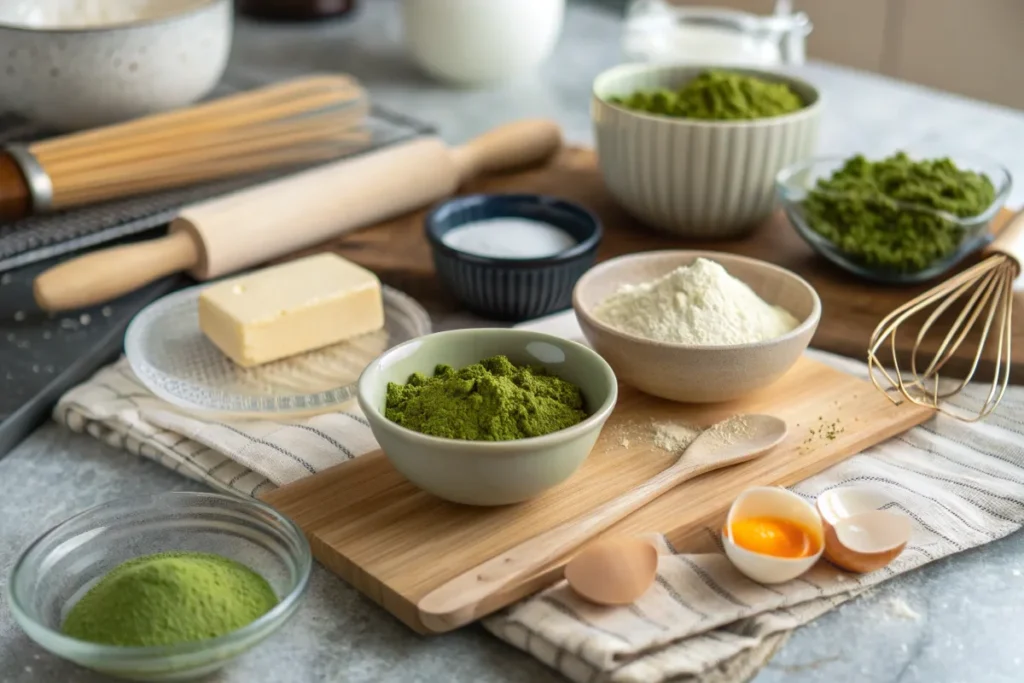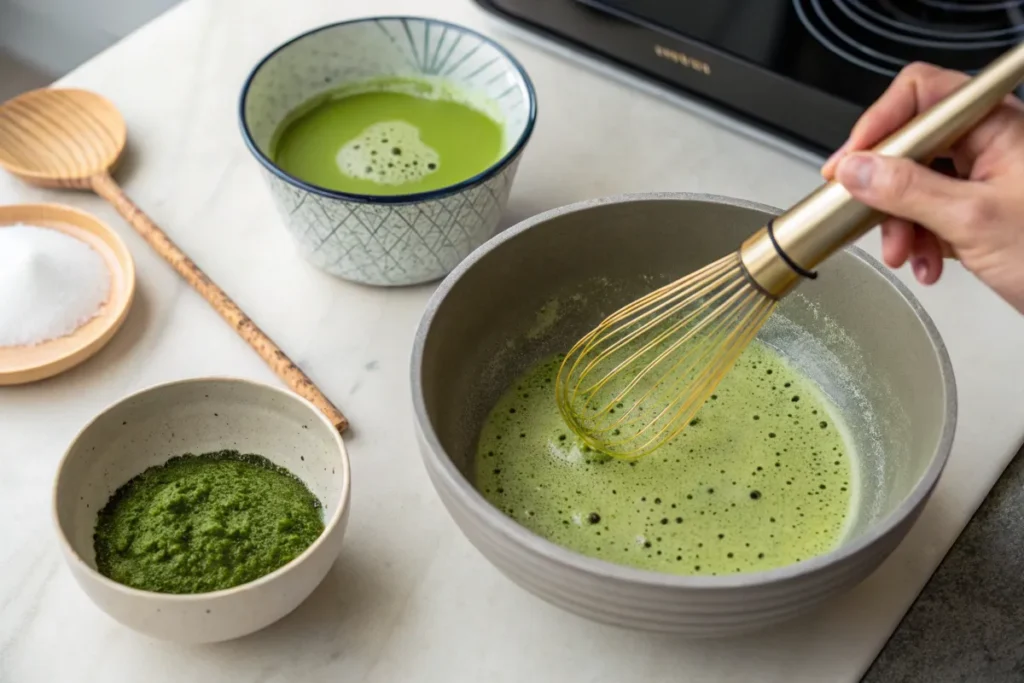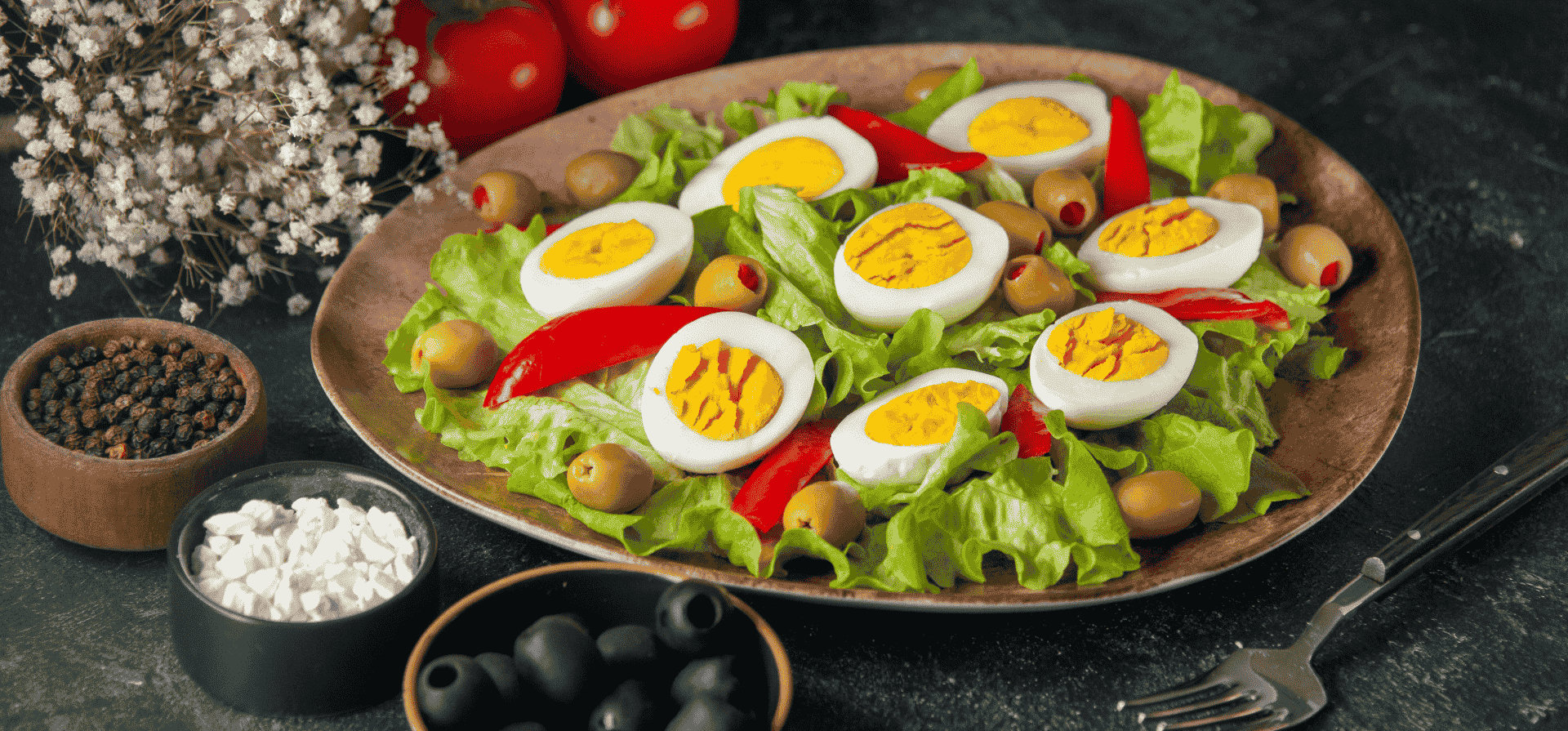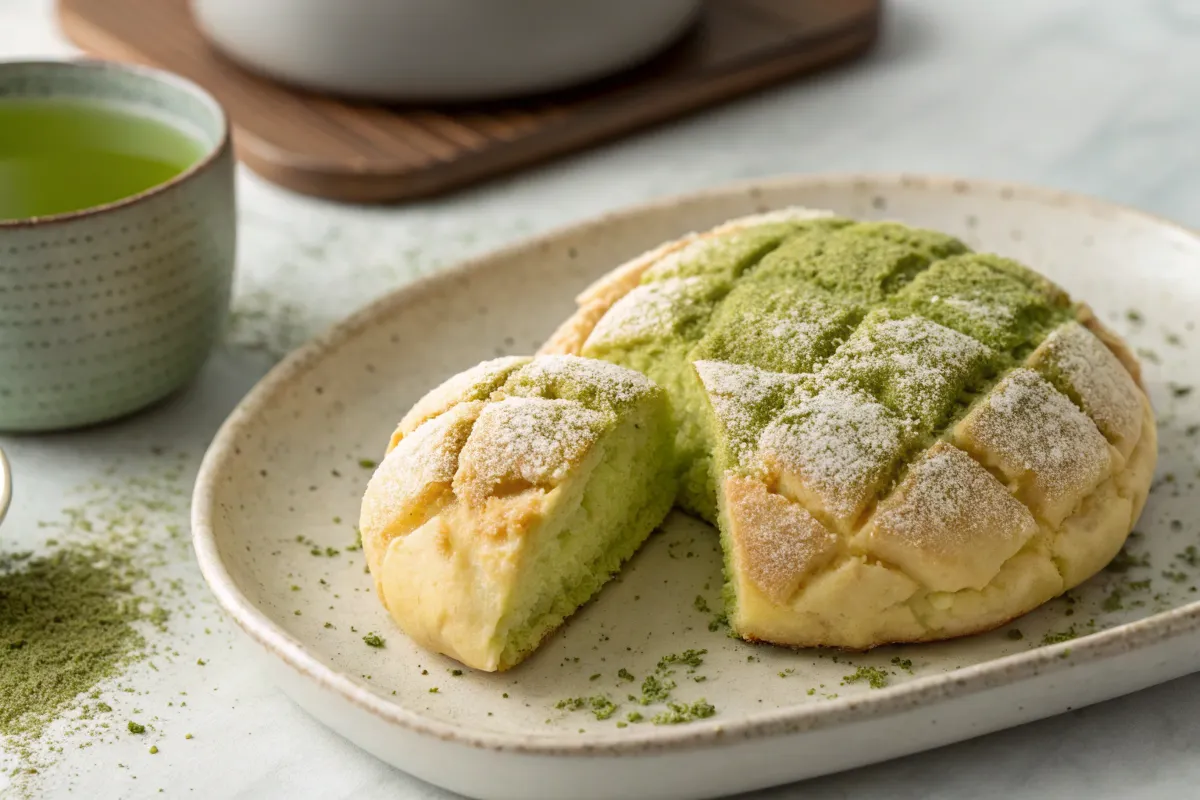Ultimate Guide to Matcha Pan: Recipes, Tips, and Variations
If you’re a fan of Japanese pastries or simply looking to explore new flavors, matcha pan is a delicious treat that combines the richness of matcha with the comforting, soft texture of Japanese bread. This guide will take you on a journey through everything you need to know about matcha pan, from its origins to how to make it at home, and even variations you can try. Whether you’re a baking enthusiast or just someone with a sweet tooth, you’ll find plenty of inspiration here. Let’s dive into the world of matcha pan!
What is Matcha Pan?
Understanding Matcha Pan and Its Origins
Matcha pan is a popular Japanese bread that beautifully blends the earthy flavor of matcha green tea with the light, fluffy texture of traditional Japanese buns. But what exactly makes matcha pan so special? Well, it’s not just the addition of matcha – it’s how that vibrant green tea powder interacts with the dough to create a delightful taste. The history of matcha pan traces back to Japan, where matcha has been used for centuries in a variety of sweets, including cakes, cookies, and even bread.
This bread is often a sweet roll or bun, sometimes filled with matcha cream, or topped with a crunchy, sugary layer. Whether you’re biting into a soft, airy bun or enjoying the crispiness of a matcha melon pan, you’ll experience a unique combination of bitterness from the matcha and sweetness from the dough – a perfect balance of flavors.
Key Characteristics of Matcha Pan
When you take a bite of matcha pan, the first thing you’ll notice is its vibrant green color, a clear giveaway that matcha is at the heart of this treat. But what sets it apart from regular bread is its light, fluffy texture, often paired with a crisp topping. The dough itself is soft and slightly sweet, and the matcha flavor is present but not overpowering, allowing the bread’s natural sweetness to shine through. Some variations even include fillings like matcha cream or red bean paste, adding depth to the flavor profile.
So, whether you’re having matcha pan for breakfast or as a snack with your afternoon tea, its rich taste and fluffy texture are sure to leave you coming back for more.
Bien sûr! Voici la réponse mise à jour avec les unités des ingrédients sous forme de tableau, comme demandé.
Popular Types of Matcha Pan
Matcha Melon Pan
One of the most beloved versions of matcha pan is matcha melon pan. This sweet treat has a crunchy, cookie-like top that gives it a unique texture and flavor. The outer layer, typically made from a sugar-cookie dough, is crisp and golden, while the inside remains soft and fluffy. The addition of matcha gives the bread a vibrant green hue and an earthy flavor that complements the sweetness of the dough.
If you’ve ever had a melon pan, you know it’s all about the contrast between the tender inside and the crispy outside. In the case of matcha melon pan, that flavor contrast is even more exciting. The matcha not only enhances the flavor but adds a bit of richness that makes each bite satisfying. It’s the perfect snack with a hot cup of tea or even as a quick breakfast. Plus, the sweetness of the cookie top paired with the bitterness of the matcha is a delightful combination that will make your taste buds sing!
Matcha Shokupan
Another popular variation of matcha pan is matcha shokupan, a type of Japanese milk bread. This soft, pillowy bread is infused with matcha powder, creating a greenish hue throughout the dough. Unlike the matcha melon pan, matcha shokupan doesn’t have a crispy top; instead, it’s all about the softness and the slight bitterness that comes from the matcha.
Matcha shokupan is perfect for making sandwiches, toast, or even matcha French toast. It’s simple yet flavorful, and it pairs well with a variety of fillings, like butter, cream cheese, or even red bean paste. The smooth texture and gentle matcha flavor make it a great choice for those who prefer a less intense matcha experience. If you’re a fan of soft, squishy bread with a hint of green tea, matcha shokupan should definitely be on your must-try list.
How to Make Matcha Pan at Home

Essential Ingredients for Matcha Pan
To create the perfect matcha pan at home, you’ll need a few basic ingredients. Don’t worry, these are easy to find at most grocery stores, and the recipe is quite simple! The star ingredient, of course, is matcha powder. It’s important to use high-quality matcha for the best flavor, as the better the matcha, the richer the bread’s flavor will be. You’ll also need all-purpose flour, sugar, unsalted butter, milk, and yeast to get that perfect, airy texture.
Here’s a breakdown of the essential ingredients:
| Ingredient | Purpose | Typical Amount |
|---|---|---|
| Matcha powder | Provides flavor and vibrant green color | 2-3 tablespoons (10-15g) |
| All-purpose flour | Forms the base of the dough | 3 cups (360g) |
| Sugar | Adds sweetness | 1/4 cup (50g) |
| Unsalted butter | Adds richness and softness | 1/4 cup (60g) |
| Milk | Helps create a soft, light texture | 1/2 cup (120ml) |
| Yeast | Helps dough rise and become airy | 1 packet (7g) |
If you’re looking for a twist, you can also add ingredients like white chocolate chips, red bean paste, or matcha cream for filling or topping, depending on the type of matcha pan you’re making.
Step-by-Step Matcha Pan Recipe

Now, let’s move on to making the dough! Here’s a simple recipe for matcha pan that will yield soft, pillowy buns with a beautiful green color.
- Prepare the yeast mixture: Start by dissolving yeast in warm milk and letting it sit for 5-10 minutes until it becomes frothy. This step ensures the yeast is active and will help the dough rise.
- Mix dry ingredients: In a large bowl, combine all-purpose flour, matcha powder, sugar, and a pinch of salt. Stir them together until well blended.
- Add wet ingredients: To the dry ingredients, add your yeast mixture, melted butter, and a beaten egg. Mix everything together until the dough begins to form.
- Knead the dough: Turn the dough out onto a floured surface and knead for about 10 minutes until it becomes smooth and elastic. If the dough is too sticky, add a little more flour, but don’t overdo it—this dough should be soft and slightly tacky.
- First rise: Place the dough in a lightly oiled bowl and cover it with a damp cloth. Let it rise for about 1 to 1.5 hours, or until it has doubled in size.
- Shape the dough: Once the dough has risen, punch it down to release the air, and divide it into equal-sized portions. Shape the portions into small buns and place them on a baking tray lined with parchment paper.
- Second rise: Let the shaped buns rise again for about 30 minutes, or until they puff up.
- Bake: Preheat your oven to 350°F (175°C) and bake for 20-25 minutes or until the buns are golden brown and sound hollow when tapped on the bottom.
- Cool and serve: Let the matcha pan cool on a wire rack before serving. You can enjoy them plain or fill them with sweet fillings like matcha cream, whipped cream, or red bean paste.
Making matcha pan at home is easier than you think, and the results are so rewarding! Whether you prefer the classic melon pan style or a soft loaf, this recipe will give you the perfect base for experimenting with different fillings and toppings. Enjoy your homemade matcha pan with a cup of green tea for the ultimate experience!
Matcha Pan Variations
Matcha Melon Pan Variations
When it comes to matcha pan, there’s no limit to the creative variations you can explore. Matcha melon pan is a fantastic place to start. However, if you’re looking for a twist, you can easily add or swap ingredients to make it your own.
For instance, you could experiment with different flavors for the cookie topping. While the traditional matcha melon pan uses matcha for the outer crust, you can try using matcha-flavored chocolate, strawberry powder, or even a combination of matcha and cocoa for a marbled effect. These variations not only enhance the flavor but also create a visually appealing contrast.
Additionally, you can add a filling inside the bread itself. A rich matcha cream or red bean paste can take the flavor profile to the next level, adding a creamy, sweet contrast to the slightly bitter matcha. Alternatively, whipped cream or chocolate ganache would be a more decadent option.
Another fun variation is to change up the texture of the cookie topping. Try adding chopped nuts like almonds or pistachios to the cookie layer for a delightful crunch. These additions make the matcha pan even more exciting to bite into, offering a perfect balance of softness and crunch.
Matcha Pan with White Chocolate or Red Bean
For those who want a different experience with matcha pan, adding fillings like white chocolate or red bean paste will give it a richer flavor. The smooth, creamy white chocolate pairs beautifully with the slight bitterness of the matcha, creating a well-balanced taste that’s sure to please those with a sweet tooth.
You can also make a more traditional matcha pan by incorporating red bean paste. This classic Japanese filling is sweet yet mild, providing a great counterpoint to the intense matcha flavor. Simply stuff your dough with red bean paste before baking, and you’ll have a delightful fusion of textures and flavors in every bite.
Health Benefits of Matcha in Matcha Pan
Nutritional Benefits of Matcha
While matcha pan is undeniably a treat, it also offers some health benefits, thanks to the star ingredient: matcha. This powdered green tea is packed with antioxidants, particularly catechins, which have been linked to a variety of health benefits, including improved heart health and enhanced metabolism. Additionally, matcha is known to help boost energy levels and improve focus, making it a great addition to your morning routine.
Another benefit of matcha in matcha pan is its ability to support detoxification. The chlorophyll in matcha helps cleanse the body by eliminating toxins. Moreover, matcha contains fiber, which is beneficial for digestion. So, while enjoying your matcha pan, you’re also giving your body a little health boost!
Balancing Flavor and Health
It’s important to note that while matcha pan contains healthful matcha, it’s still a sweet treat. The sugar and butter in the dough balance out the earthy bitterness of the matcha, so you get a satisfying, well-rounded flavor. The natural sweetness of the dough complements the slightly bitter taste of the matcha, making it a perfect combination for those who want to indulge without going overboard on sweetness.
However, if you’re looking to make a healthier version of matcha pan, consider reducing the sugar content in the dough and topping, or opting for a low-sugar filling like Greek yogurt or unsweetened red bean paste. This way, you can still enjoy the vibrant flavor of matcha without the added sugars.
These sections explored the versatility of matcha pan and how to enhance it with variations like white chocolate or red bean paste, as well as the health benefits of matcha. If you enjoy baking, try experimenting with these ideas for a new twist on your next batch of matcha pan!
Common Mistakes to Avoid When Making Matcha Pan
Overmixing the Dough
When making matcha pan, one common mistake is overmixing the dough. While it might seem like mixing it until it’s perfectly smooth is the best way to go, overmixing can lead to tough bread. This happens because the gluten in the flour becomes overdeveloped, causing the dough to lose its soft, airy texture. Instead, aim for a dough that is just combined, smooth, and a little tacky. It should feel soft and elastic but not overly firm.
To avoid overmixing, stop kneading as soon as the dough is smooth and doesn’t stick too much to your hands. You’ll be left with a dough that rises well and has that perfect fluffy texture when baked into matcha pan.
Choosing Low-Quality Matcha
Another key mistake when making matcha pan is using low-quality matcha powder. Not all matcha is created equal! High-quality matcha is vibrant green and has a rich, smooth flavor, while lower-quality matcha can be dull in color and bitter in taste. Using a poor-quality matcha will impact the flavor of your matcha pan, making it less enjoyable.
When selecting matcha, look for ceremonial grade matcha, which is the highest quality available. It’s worth the extra cost as it provides a much richer, smoother flavor that will elevate your matcha pan. Additionally, always check the expiration date, as matcha can lose its flavor and potency over time.
FAQs About Matcha Pan
How Long Does Matcha Pan Last?
One of the most common questions about matcha pan is how long it lasts once baked. Matcha pan is best enjoyed fresh, but it can still be kept for up to 2-3 days when stored in an airtight container. To maintain the bread’s soft texture, place a slice of bread or a small cloth in the container to help retain moisture. If you find that the matcha pan is starting to dry out, lightly warm it in the microwave or oven to bring back some of its softness.
For longer storage, you can freeze matcha pan. Wrap individual buns tightly in plastic wrap and store them in a freezer bag. They will keep well for up to 3 months. When ready to eat, simply defrost at room temperature or reheat in the oven for a few minutes.
Can I Freeze Matcha Pan?
Yes, you can freeze matcha pan! Freezing is a great way to store extra buns if you’ve made a large batch. To freeze, first let the matcha pan cool completely. Then wrap each bun tightly in plastic wrap or foil, making sure no air can get in. Place the wrapped buns in a freezer-safe bag or container.
When you’re ready to enjoy them, take the matcha pan out of the freezer and allow it to thaw at room temperature. You can also reheat them in the oven at 350°F (175°C) for about 5-7 minutes to bring them back to their fresh-baked glory.
Can I Make Matcha Pan Gluten-Free?
Yes, it is possible to make a gluten-free version of matcha pan! To do so, simply substitute the all-purpose flour with a gluten-free flour blend. You can also add xanthan gum or guar gum to help provide structure and elasticity to the dough. Keep in mind that the texture of gluten-free matcha pan may be slightly different—gluten-free breads often tend to be a bit denser. However, with the right adjustments, you can still achieve a soft and delicious matcha pan that’s perfect for those avoiding gluten.
For more tips on making gluten-free bread, check out our other recipe articles on gluten-free, egg-free bread.


